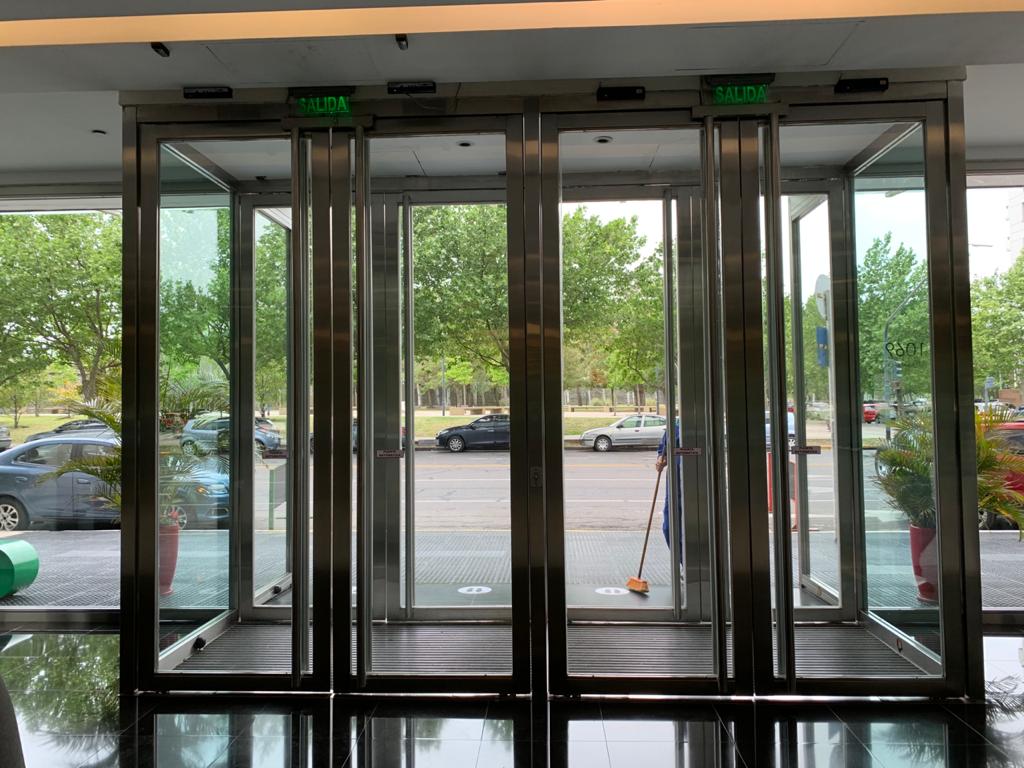What are the key components of an automatic sliding door motor system?
Automatic sliding doors have become ubiquitous in various settings, seamlessly blending convenience with modern aesthetics. At the core of their smooth operation lies a sophisticated motor system that orchestrates the opening and closing of these doors. In this article, we delve into the essential components of an automatic sliding door motor system, unraveling the technology that powers these silent guardians of modern entrances.

1. Motor:
The motor serves as the powerhouse of the automatic sliding door system. Typically an electric motor, it converts electrical energy into mechanical motion, driving the door panels along their designated tracks. Motors can be AC (alternating current) or DC (direct current), each offering specific advantages in terms of control, efficiency, and reliability.
2. Drive Mechanism:
The drive mechanism is responsible for translating the rotational motion of the motor into the linear motion required to move the door panels. Common drive mechanisms include belts, chains, or gears connected to the motor. The choice of drive mechanism influences factors such as speed, noise level, and overall performance.
3. Control Unit:
The control unit acts as the brain of the system, receiving inputs from sensors and determining the appropriate response. It houses a logic board that interprets these inputs, dictating the speed, duration, and direction of door movement. The control unit ensures seamless coordination between various components for optimal performance.
4. Sensors:
Sensors play a pivotal role in the automatic sliding door system by detecting the presence of individuals or obstacles in the door's path. Common sensor types include motion sensors, infrared sensors, or microwave sensors. The information gathered by these sensors triggers the control unit to initiate the door-opening sequence.
5. Microprocessor:
In modern automatic sliding door systems, a microprocessor adds an extra layer of control and adaptability. The microprocessor continuously monitors and adjusts door movements, ensuring optimal performance, responsiveness to sensor inputs, and compliance with safety protocols. It enhances the precision and intelligence of the overall system.
6. Gear System:
Gear systems regulate the motion of the door, converting the rotational force from the motor into the linear motion required for sliding. Different gear configurations, such as worm gears or helical gears, impact factors like noise level, efficiency, and the smoothness of door operation.
7. Safety Features:
Automatic sliding door motors are equipped with an array of safety features to prevent accidents. These may include obstacle detection sensors that stop or reverse the door upon detecting an obstruction. Emergency brake systems swiftly bring the door to a stop in case of malfunctions or emergencies, ensuring user safety.
8. Emergency Power Supply:
To maintain functionality during power outages, automatic sliding door systems often include an emergency power supply. This ensures continued access and operation of the doors, especially in critical situations. The emergency power supply is typically designed to provide sufficient power for essential functions.
9. Manual Override Mechanism:
In situations where manual operation becomes necessary, automatic sliding door systems are equipped with a manual override mechanism. This allows individuals to manually open or close the doors, providing a fail-safe option in case of power failure or system malfunction.
10. Variable Speed Control:
Many automatic sliding door motors offer variable speed control, allowing for smooth and adjustable door movements. This feature is particularly beneficial in high-traffic areas, enabling doors to open quickly for rapid entry or exit and slowing down for more controlled operation during normal usage.
Conclusion:
The automatic sliding door motor system is a sophisticated assembly of components working in harmony to provide seamless access and enhance the functionality of modern entrances. From the motor and drive mechanism to sensors, control units, and safety features, each component plays a vital role in creating an efficient and secure door operation. As technology continues to advance, innovations in these components contribute to the ongoing evolution of automatic sliding door systems in various architectural applications.







